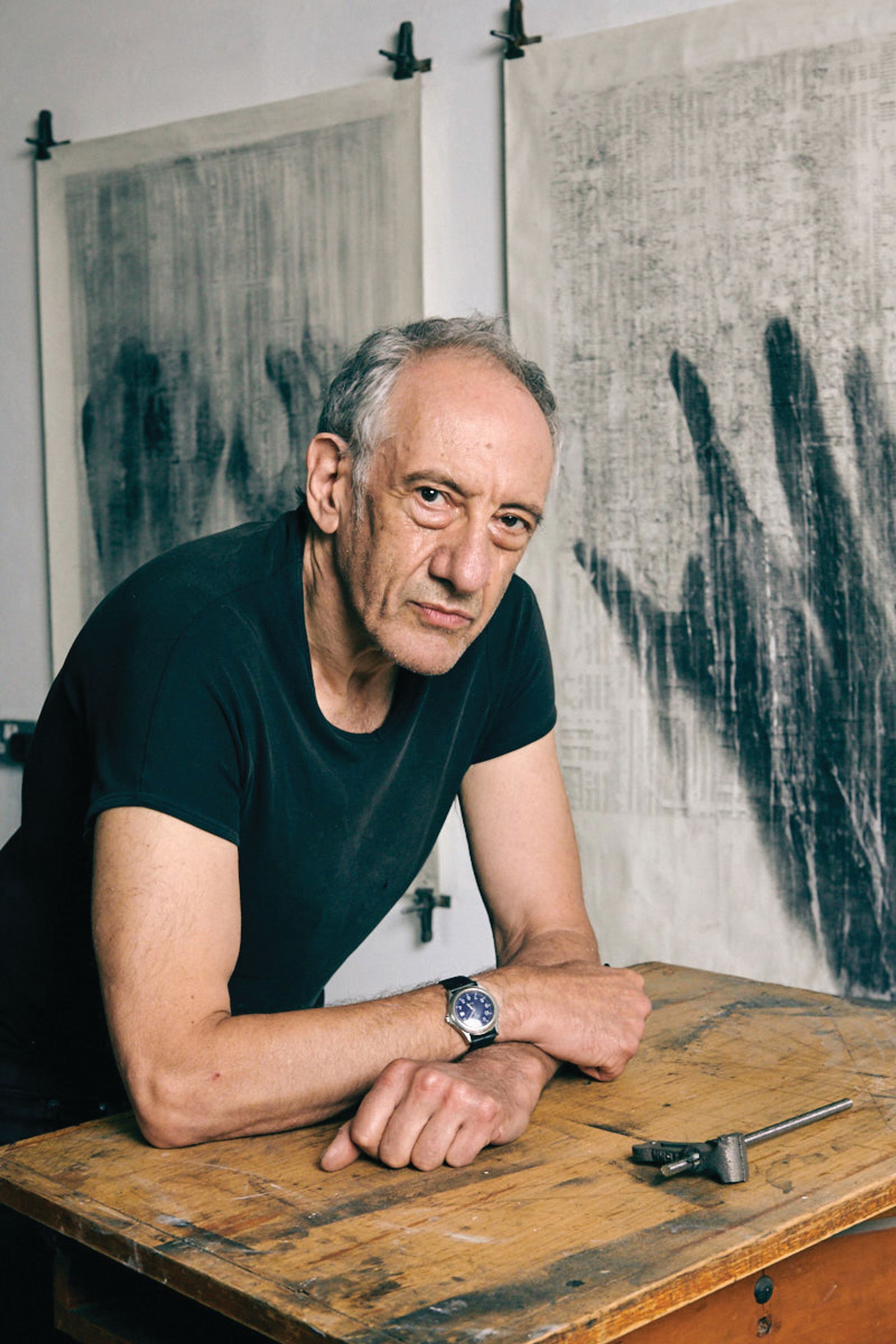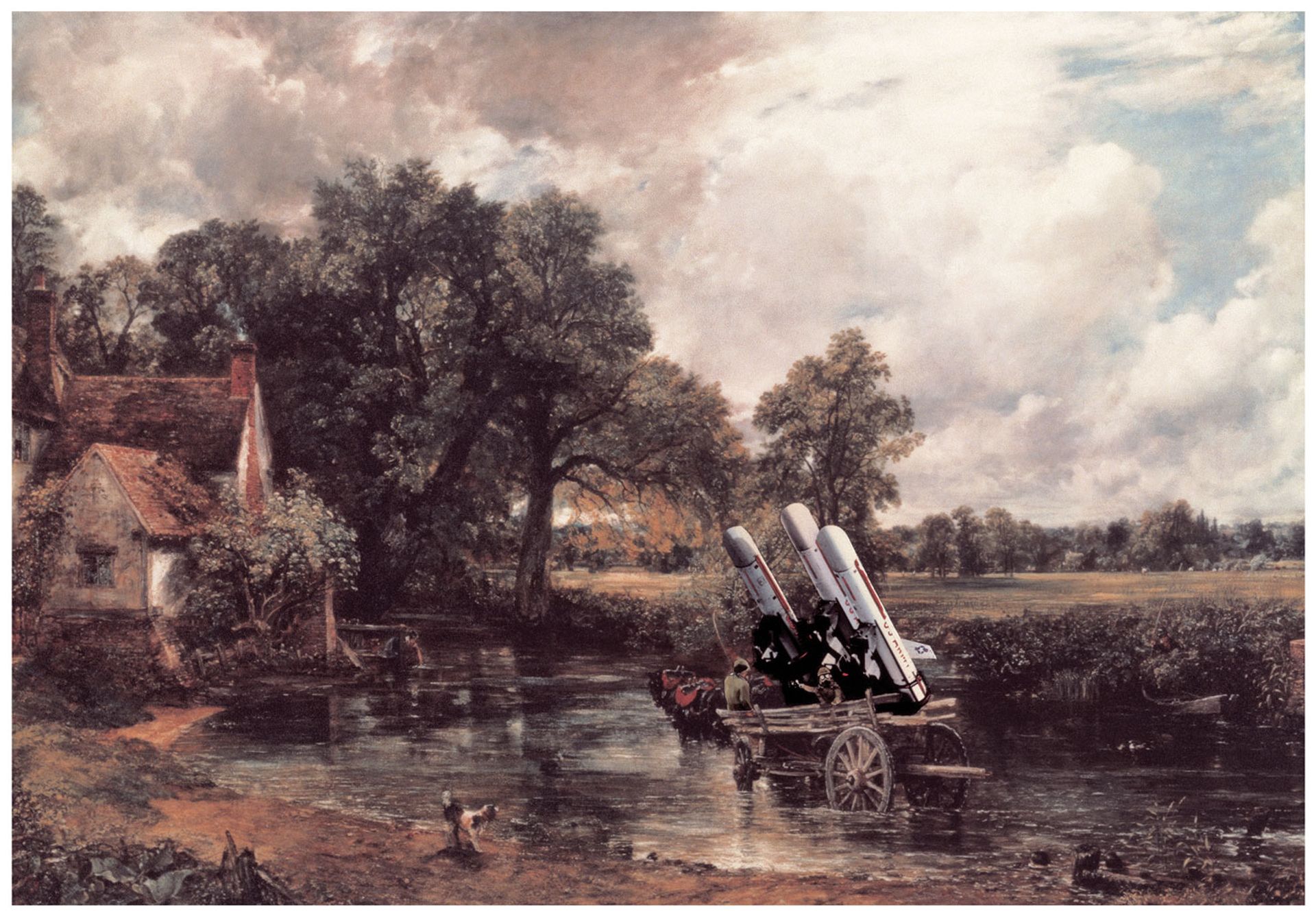Few artists could claim to have shown their work in venues as diverse as the United Nations, the Imperial War Museum and Tate Modern, and yet still be better known for creating some of the most memorable political images of the past half-century, many of which were seen not in galleries or museums, but on the streets, often given away freely in support of some major cause or protest.
The British artist Peter Kennard, whose work over five decades is being explored in Archive of Dissent, a new retrospective at the Whitechapel Gallery in London, has done just that, “cutting, tearing, montaging and juxtaposing imagery that we are all bombarded with daily [to show] what lies behind the mask—the victims, the resistance”, he says in a statement.
Kennard is a prolific artist and a committed Leftist of no particular affiliation. His work has been turned into placards and posters supporting causes that range from protests against the Vietnam War (which first inspired him to give up painting and take up photomontage in the late 1960s), the Anti-Apartheid Movement and the Campaign for Nuclear Disarmament, through to Extinction Rebellion and halting the current conflicts in Ukraine and Gaza. Kennard’s concerns range from preserving the UK’s National Health Service to saving the environment, and yet the one constant in his work—as in life—is war, expressing his outrage at the human cost, and the toll of the military-industrial complex.

Peter Kennard Photo: Teresa Eng
Think of any of the major public demonstrations in the UK since the early 1970s, and you will most likely conjure one of his images: be it Haywain with Cruise Missiles (1980), his reworking of John Constable’s classic 1821 painting in response to the proposal to house US nuclear missiles in the UK, or his most recent rendition of the Palestinian flag, bleeding from its red triangle motif, for the Stop the War Coalition.
At the Whitechapel Gallery, a bellwether for contemporary art since it opened in 1901, Kennard has an ideal temporary home for his work. The gallery began life with the aim of showing “the finest art of the world for the people of the East End”, presenting influential exhibitions and championing new artists, while consistently putting on work that engages the political, from its presentation of Pablo Picasso’s Guernica (1937) in 1939, to a new commission for the Guerrilla Girls in 2016. It has also produced notable retrospectives reappraising the work of neglected artists, such as its 2014 exhibition devoted to Hannah Höch, a pioneer of political collage and a great hero of Kennard’s.
The exhibition will take place in a part of the Whitechapel that was once the Passmore Edwards Library (which the gallery moved into after its 2009 expansion), a place used by radical writers and activists. And that history informs Kennard’s presentation of his work. “I wanted to relate to the fact that it was a really important space where originally the Jewish community and then the Bangladeshi community would come and read newspapers, discuss, and get out of the cold, as most were living in poverty,” Kennard says, speaking at his nearby London Fields studio. Kennard’s own books as well as his use of newsprint will be evident in Archive of Dissent, alongside wall art, light installations, vitrines, posters and placards.

Peter Kennard's Haywain with Cruise Missiles (1980) © Peter Kennard
The most recent works include The People’s University of the East End (2024), which refers to the nickname given to the gallery’s old library, and is a kind of mashup of his works used on demonstrations, but devoid of the original text or slogans. “I want to give a sense of ongoing conflict,” he says. “I’ve always tried to make imagery that can actually relate to events then and events now. In a gallery, people can give time, so I want to make the images speak to people—not telling them what to think, but just opening up the idea that art can relate to conflict.”
Kennard is ambivalent about the UK’s general election, which takes place a few weeks before Archive of Dissent opens, feeling that it is unlikely to usher in any great change. His focus is the broader sweep of politics, and yet he is surprisingly reticent to attribute any persuasive power to political art. “I don’t think art in itself can change anything, but allied to [activist] groups and NGOs it can,” he says. “So many generations and ethnicities have come together in support of Gaza, and I think that’s so important. It’s not going to do anything. But people in Palestine see it—that around the world, they’ve got support.”
• Peter Kennard: Archive of Dissent, Whitechapel Gallery, London, 23 July-19 January 2025


